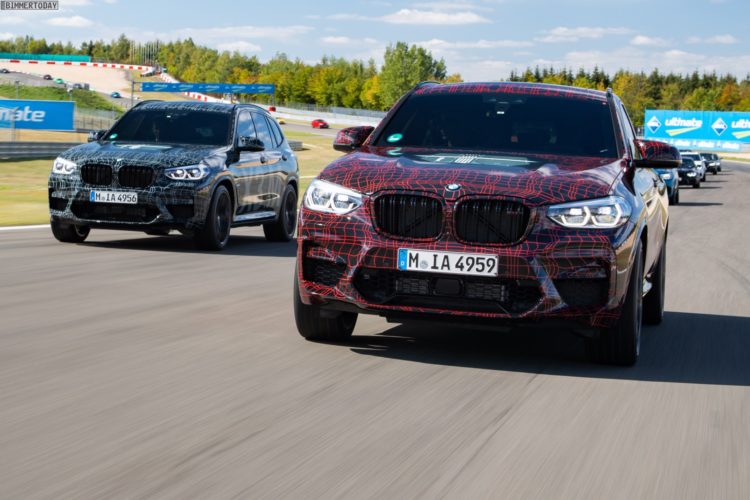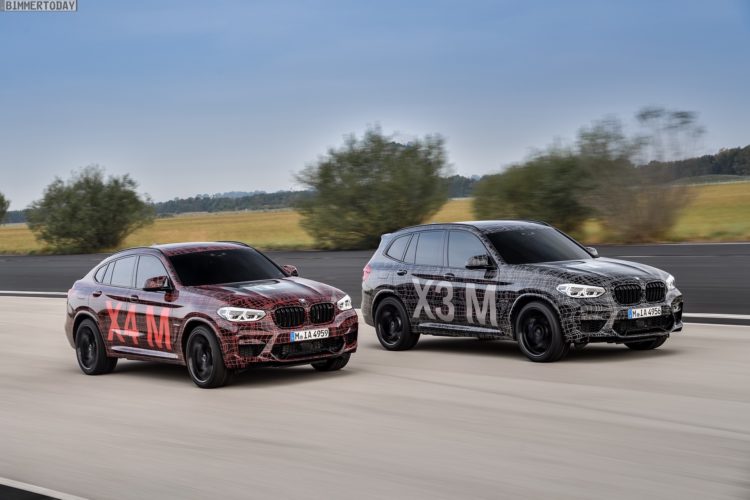2019 wagt sich die M GmbH erstmals ins Segment der High-Performance-Mittelklasse-SUV: BMW X3 M und X4 M stehen in den Startlöchern und sollen ein hochattraktives Segment erschließen, dessen kleiner Bruder schon heute zu den wichtigsten der M GmbH zählt. Denn auch wenn sich alle Augen auf Modelle wie M2 und M5 richten, haben sich BMW X3 M40i und M40d im vergangenen Jahr hervorragend verkauft und entscheidend zum Absatz-Rekord von erstmals über 100.000 M-Modellen beigetragen.
Doch während sich die Fahrer von X3 M40i und M40d mit weit unter 400 PS begnügen müssen, wird der neue BMW X3 M F97 eher im Bereich von 500 PS unterwegs sein. Seine erheblich besseren Fahrleistungen resultieren ähnlich wie bei anderen M-Modellen aber nicht nur aus gesteigerter Motorleistung, sondern natürlich auch an einem viel stärker auf Performance ausgelegten Fahrwerk und einem spürbar agiler abgestimmten Allradantrieb.
Im aktuellen Teaser-Video sehen wir das schnelle Duo sowohl auf Asphalt als auch auf losem Untergrund. Auf weitere Infos zu den beiden Power-SUV auf X3- und X4-Basis müssen wir vermutlich nicht mehr lange warten, üblicherweise vergehen zwischen offiziellen Teasern und der umfassenden Vorstellung mit allen Details nur noch wenige Tage oder Wochen.
Stay tuned for the first-ever BMW X3 M and BMW X4 M.
Are you ready for high-revving adventures? Stay tuned!
BMW X3 M:
Fuel consumption combined: 10.5 l/100 km;
CO2 emissions combined: 239 g/km*
BMW X4 M:
Fuel consumption combined: 10.5 l/100 km;
CO2 emissions combined: 239 g/km*All figures relating to performance, fuel consumption and CO2 emissions are provisional.
The fuel consumption and CO2 emission figures are determined according to the European Regulation (EC) 715/2007 in the version applicable. The figures refer to a vehicle with basic configuration in Germany. The range shown considers the different sizes of the selected wheels/tyres and the selected items of optional equipment, and may vary during configuration.
The values are based on the new WLTP test cycle and have been translated back into NEDC-equivalent values in order to ensure comparability between the vehicles. With respect to these vehicles, for vehicle-related taxes or other duties based (at least inter alia) on CO2 emissions, the CO2 values may differ from the values stated here (depending on national legislation).
Correct as at: 01.02.2019.
Further information on official fuel consumption figures and specific CO2 emission values of new passenger cars is included in the following guideline: ‘Leitfaden über den Kraftstoffverbrauch, die CO2-Emissionen und den Stromverbrauch neuer Personenkraftwagen’ (Guide to the fuel economy, CO2 emissions and electric power consumption of new passenger cars), which can be obtained free of charge from all dealerships, from Deutsche Automobil Treuhand GmbH (DAT), Hellmuth-Hirth-Str. 1, 73760 Ostfildern-Scharnhausen and at https://www.dat.de/co2/.Gepostet von BMW M am Freitag, 1. Februar 2019











